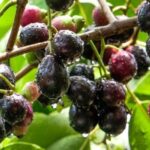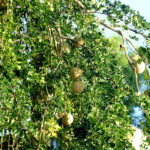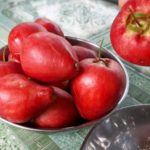Mention the forest ebony and many will recall the familiar nursery rhyme: “Rain falls softly, ebony bears fruit, young girls find their charm…”. These simple lyrics have been etched in the minds of Western children for generations, intertwined with the rainy season and clusters of ripe, deep purple berries. As the first rains of late May arrive, the ebony tree blooms and bears fruit, heralding a sweet summer.
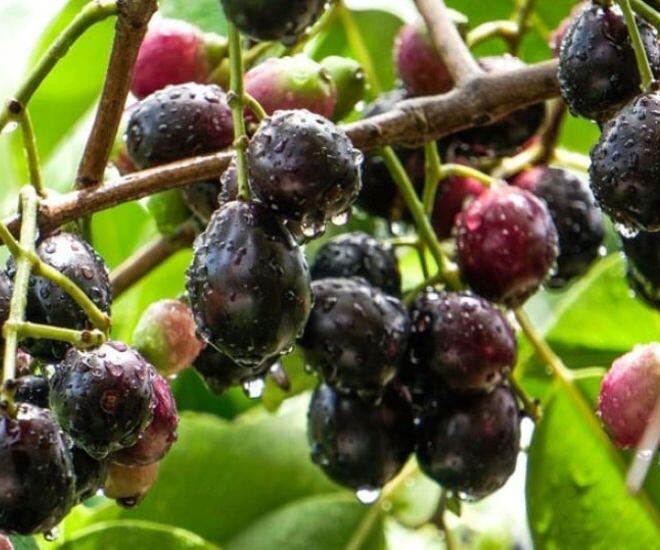
Forest ebony, also known as wild ebony or forest olive, has long grown wild in the mountains of the Western region. This tree thrives in the mountain climate, requiring no care or watering, yet produces tiny white flowers and clusters of dark, juicy berries. Locals call ebony a “gift from nature,” a simple yet abundant treasure.
Ebony flowers typically bloom in early summer, pure white and emitting a subtle fragrance. As the flowers fall, green berries appear, gradually turning red, then purple, and finally a glossy black when ripe. Each berry is no larger than a fingertip, oval-shaped, but when ripe, it becomes a deep purple, plump, and irresistibly tempting. From late May to July in the lunar calendar is the peak season for ebony, when the trees are laden with fruit and markets are filled with its distinctive purple hue.
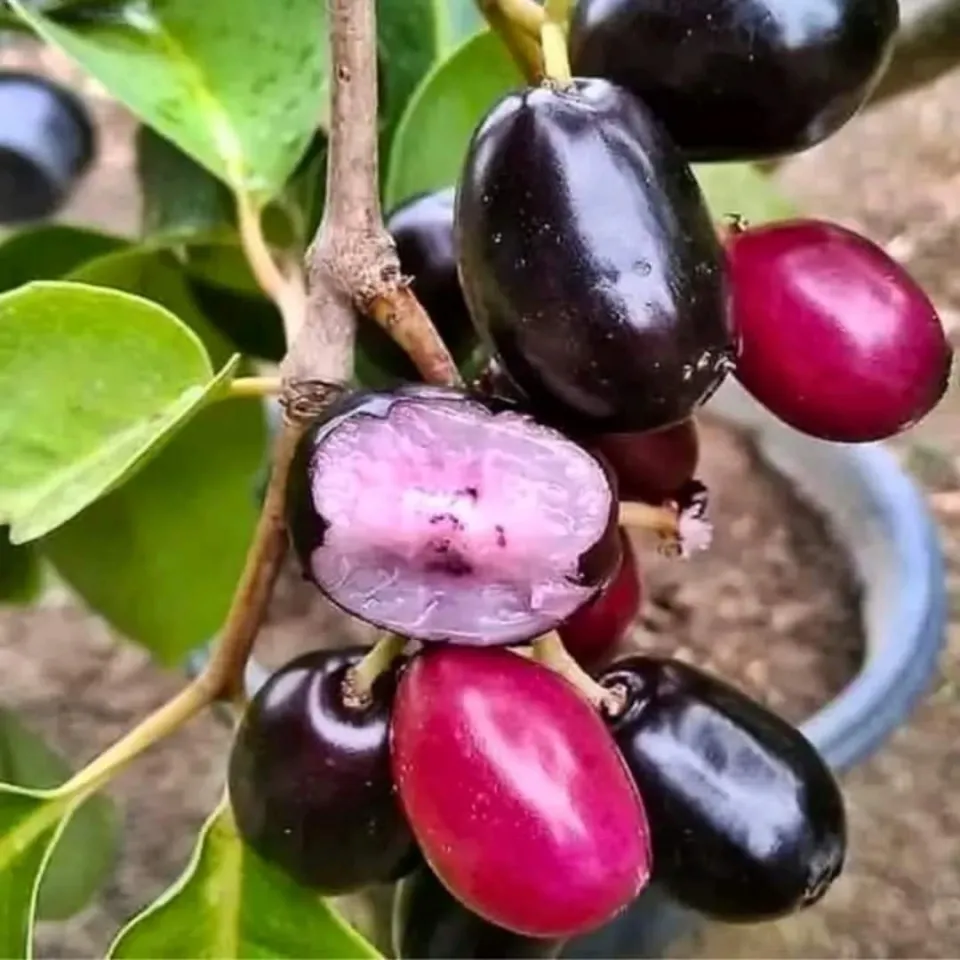
What makes forest ebony berries unforgettable is their unique flavor: a blend of tartness, sweetness, and a hint of bitterness. The taste is both familiar and novel, leaving a lasting impression. Western children often gather to pick and eat the berries on the spot or enjoy them with salt and chili—a simple yet irresistible treat.
For urban dwellers, forest ebony sparks curiosity and novelty. Though small, the berries carry the essence of the countryside, serving as both a snack and a bridge to childhood memories.
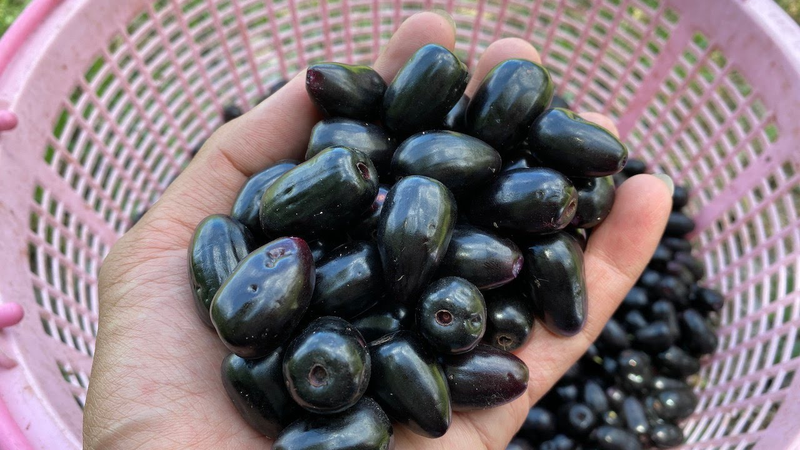
Beyond its delightful taste, forest ebony is packed with nutrients. Rich in vitamins A, C, riboflavin, thiamine, choline, folic acid, and niacin, it also contains glucose and fructose for energy and easy digestion.
Studies show that ebony berries are high in polyphenol antioxidants, which stabilize blood sugar and protect insulin-producing pancreatic cells from free radicals. Polyphenols also reduce inflammation and slow starch digestion, preventing sudden spikes in blood sugar.
Additionally, the berries’ abundant vitamin C and iron boost hemoglobin, improve oxygen transport in the blood, and detoxify the body. With about 55 mg of potassium per 100 grams, ebony berries support heart health, reducing the risk of high blood pressure, arterial hardening, and stroke. These benefits make forest ebony not just a snack but a natural remedy.
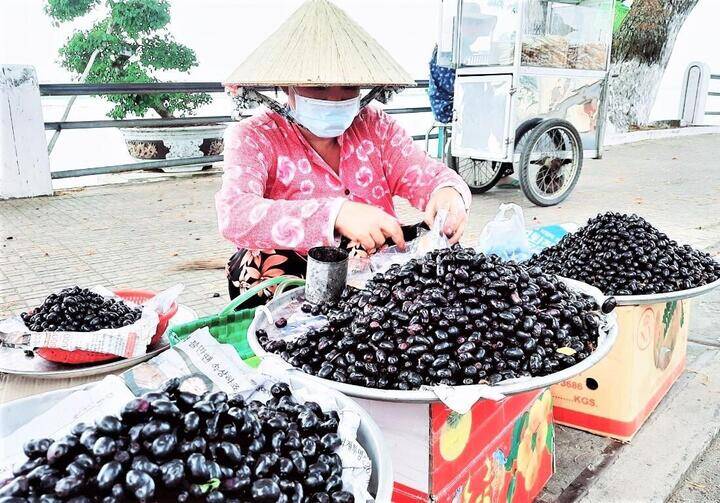
Today, forest ebony is no longer an obscure fruit. Urban markets embrace it as a unique, nutritious delicacy. On online marketplaces, it sells for 100,000–130,000 VND/kg, far more than in the past. Despite the high price, demand remains strong due to its distinctive flavor and health benefits.
In Nui To commune (Tri Ton, An Giang), many households still grow a few ebony trees around their homes. During the season, they harvest the fruit to supply neighboring provinces and Ho Chi Minh City. Ebony trees begin bearing fruit at 7 years old and can live over 50 years, with older trees yielding more fruit. However, harvesting is labor-intensive: pickers must climb tall trees and carefully pluck each ripe cluster by hand.
Some farmers now cultivate ebony as a cash crop, adding to their income. This reflects the elevated economic value of a once-wild fruit.
For many in the West, ebony berries symbolize more than just fruit—they evoke cherished memories. Images of barefoot children picking berries, laughter echoing through the forest, and the sweet taste on their tongues—all become indelible fragments of memory. The berries bring a sense of peace, recalling summers past. For those far from home, the taste of ebony stirs homesickness, reminding them of childhood, family, and simple yet sacred values.
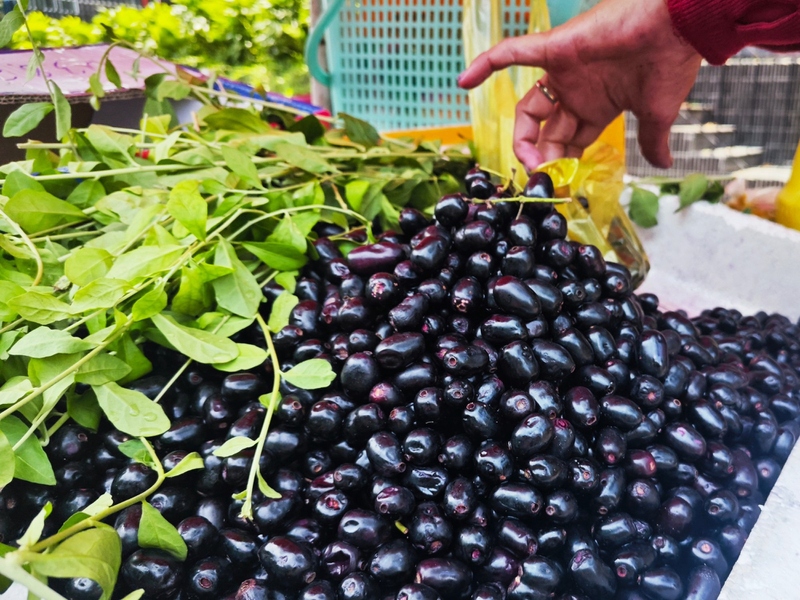
Amidst a sea of imported fruits, the humble forest ebony stands out with its local charm. More than a rural treat, it symbolizes the bond between humans and nature, between memory and the present. Each summer, the sight of purple ebony berries evokes not just a delicacy but also childhood, carefree days by the hills and forests of the West.
In today’s fast-paced world, forest ebony reminds us of simplicity, peace, and the enduring essence of home. This is what gives this small yet meaningful fruit its lasting appeal.
Forest Fruit Once a Child’s Play Snack Now Sells as a Premium Urban Delicacy, Fetching Multiples of Its Original Price with Surging Demand
Nestled in the lush mountains of Western Vietnam, the forest elderberry, also known as *trâm mốc* or *trâm vối*, thrives in its natural habitat. This resilient tree, perfectly adapted to the highland climate, requires no cultivation or irrigation. Yet, each season, it bursts into a spectacle of delicate white blossoms, eventually giving way to clusters of dark, juicy berries.
The Ultimate Delicacy: A Western Specialty with a Unique Appearance and Aroma
The unique fruit of the Mekong Delta region in Vietnam has a distinctive appearance with its rough, white-grayish rind that resembles mold. However, beyond this unassuming exterior lies a treasure of a fruit. As it ripens, the flesh transforms into a deep brown, almost black, color, with a thick, luscious texture. Its scent is equally intriguing, eliciting a range of reactions—some find it overpowering and off-putting, while others are captivated by its distinctive, alluring aroma.

























